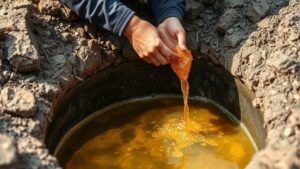Techniques for Prospecting in Historic Copper Mining Districts
Techniques for Prospecting in Historic Copper Mining Districts
The art of prospecting in historic copper mining districts combines a deep understanding of geology, historical data, and modern technology. These districts, laden with rich histories, often hold vast untapped resources. This article examines various techniques that geologists and prospectors can employ to maximize their success in these areas.
Historical Research and Context Analysis
One of the foremost steps in prospecting is to thoroughly research the history of the mining district. Understanding the timeline, previous extraction methods, and the reasons for past operational failures can provide critical insights into potential new deposits.
- Examine historical mining records and local archives to glean information about previous operations and ore quality.
- Analyze geological reports from government and university publications to understand the geological makeup of the area.
For example, the historic Butte Mining District in Montana has a rich documentation trail that reveals the arbitrary nature of past mining activities. Geologists have used this historical knowledge to identify overlooked veins of copper that modern technology can now extract economically.
Geological Surveys and Mapping
Conducting geological surveys allows prospectors to assess the physical characteristics of the land. Modern geophysical methods, like magnetic surveys and ground-penetrating radar (GPR), can provide invaluable data without the need for extensive digging.
- Magnetic surveys can identify the subsurface magnetic anomalies indicative of copper deposits.
- GPR enhances the visibility of geological structures that may contain mineralization.
An example of successful geological mapping can be seen in the Keweenaw Peninsula in Michigan, where detailed geological maps have led to the discovery of new copper lode systems, which promise significant economic viability and renewed interest in exploration.
Sampling Techniques
Sampling is crucial for assessing the presence and quality of copper deposits. Various techniques can be employed, including:
- Soil sampling, which involves collecting and analyzing soil layers to detect trace elements associated with copper.
- Rock chip sampling, which helps determine the composition of surface materials.
- Drill core sampling for depth assessment and determining the grade of copper veins.
For example, a recent study in the Copper River Basin in Alaska utilized soil sampling combined with aerial drone surveys to locate areas with higher-than-normal concentrations of copper, facilitating targeted exploration efforts.
Community Involvement and Crowdsourcing Data
Involving local communities can yield significant benefits in data gathering and lead to sustainable practices in prospecting. Many areas have local lore and knowledge about past mining activities that can assist modern prospectors.
- Engage with local historians and retired miners for anecdotal evidence that can guide exploration efforts.
- Use crowdsourcing platforms that allow amateur prospectors to share their findings and observations.
For example, in Australia’s mining districts, initiatives that combine local knowledge with modern techniques have led to the successful discovery of new mineral deposits that were previously overlooked.
Utilizing Technology: GIS and Remote Sensing
Geographic Information System (GIS) technology plays a transformative role in modern prospecting. It allows for sophisticated data analysis and visualization, which can aid in identifying potential mining sites.
- Remote sensing technologies, such as satellite imagery, can detect mineral compositions and environmental changes over time.
- GIS can integrate various data types, including geological maps, topographical data, and historical mining datasets to create comprehensive prospecting reports.
The use of GIS in the historic district of the Old Dominion Mine in Arizona has enabled prospectors to overlay geological data with historical records, leading to more targeted and efficient prospecting activities.
Conclusion
Prospecting in historic copper mining districts requires a multifaceted approach that combines historical insight, advanced technology, and community engagement. By utilizing techniques such as thorough historical research, geological surveys, innovative sampling methods, and GIS mapping, prospectors can successfully identify untapped copper resources. As the demand for copper continues to rise, mastering these techniques will be crucial for future operations.
Prospectors are encouraged to actively engage with both historical records and modern technologies to enhance their exploration efforts. This holistic approach not only contributes to resource discovery but also promotes sustainable practices and community collaboration within mining regions.

